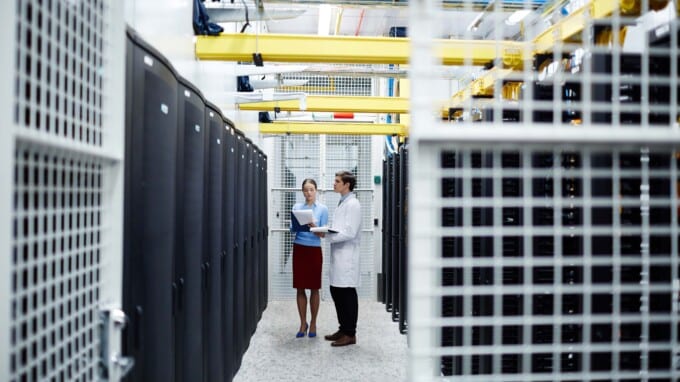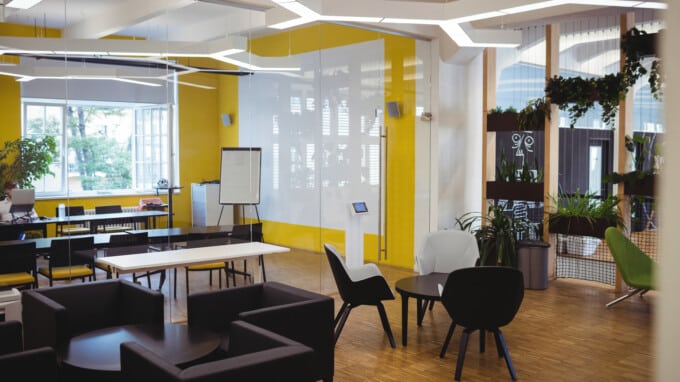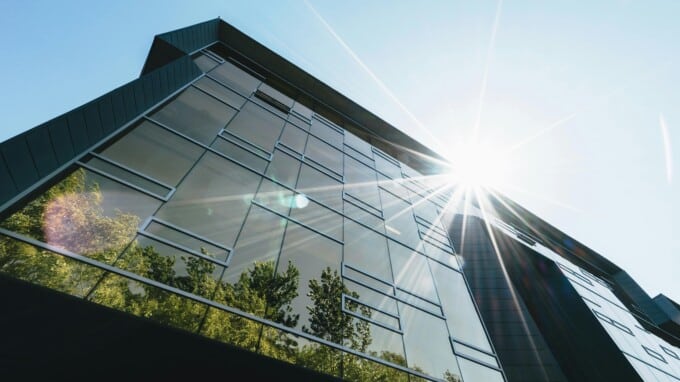The Positive Impacts of Color & Lighting in Office Design
The best office design incorporates color and lighting that triggers positive emotions and encourages employee productivity.
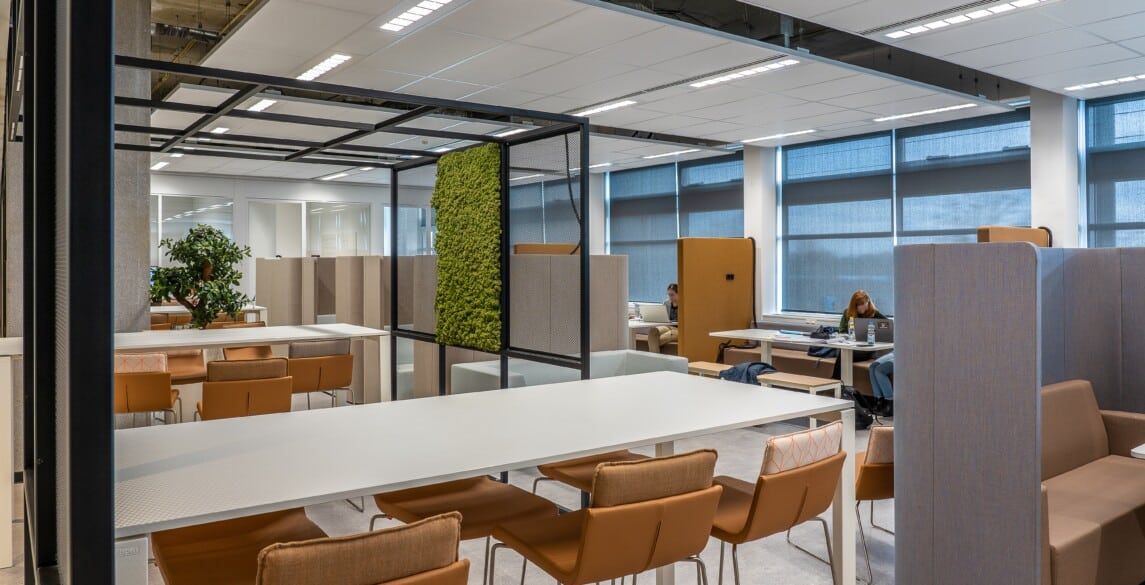
Designing an office space that is reflective of company culture and encourages employee productivity is an important task because it’s where your employees will spend much of their day, up to five days a week. Research suggests the small details, like color and lighting, play a crucial role— greatly impacting employee mood, comfort and health, demonstrating why office design is much more than an aesthetic decision.
The Impact of Color on Employee Well-Being
Color affects our moods and emotions, triggering different psychological responses. In fact, you might not realize how large of a role color plays in your everyday life. For example, have you ever noticed the prevalence of red in restaurants? Red is commonly used because people relate it with stimulation or excitement, resulting in overeating and ordering more food. Restaurants like Red Robin, McDonald’s, Chick-Fil-A, Wendy’s and Five Guys understand this correlation and use color to influence our decision-making.
Colors and Emotions
The same influence of color can be said for the workplace. The different emotions that colors provoke are recognized and generally agreed upon worldwide. For example, orange is often associated with confidence and success, and blue brings a sense of peace and trust to the work environment. Research has shown offices with bright, calming and clean colors facilitate a positive environment.
Research on Color Psychology
Studies have long demonstrated a strong correlation between color and mood or emotions. One recent study measured the influence of color on college students in different settings and determined that red excited and aroused the students, while cool colors relaxed them. In some cases (or rooms), you may want your employees to feel energized, while other spaces may be better suited as a calming environment. Either way, research on color psychology shows a direct impact on someone’s frame of mind, and more specifically, their ability to get work done.
Best Colors for Productivity
If you’re looking to revamp your office to promote productivity, consider the effects of these popular colors:
- Blue is the ultimate calming color, perfect for a space that requires focused work. It is the most favored color among employees who work in a fast-paced environment. Avoid ‘cold’ shades of blue because it can evoke feelings of sadness or discomfort.
- Yellow sparks creativity. It is perfect for an office space looking to inspire new ideas or encourage employee collaboration. But use too much yellow and you’ll leave your employees overwhelmed with eye fatigue.
- Like blue, green is an inviting, calming color. Green is an optimal choice for people who work long hours, as its easy on the eyes and helps employees focus better. Adding plants around the office is an easy way to incorporate green’s welcoming effect, along with its ties to nature and air quality.
- It isn’t surprising that red is a bold, stimulating color. It’s important to utilize the color properly, because too much red can increase stress or anxiety. If you have an active, hands-on workspace, red can be used to escalate activity.
- White isn’t ideal for widespread use throughout an office because it can come across as boring and uninspiring. Of course, white can and should be used in combination with other colors because it coordinates well and makes a space look bigger and cleaner.
The Impact of Lighting on Employee Productivity
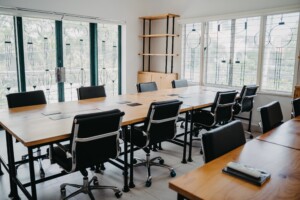
Similar to color, lighting plays a key role in our mood and ability to work and concentrate. In addition to the mental effects, poor lighting can trigger several unwelcomed physical impairments like fatigue, headaches or eye strain. From the amount to the source of lighting, this critical part of your work environment sets the tone for productivity. For example, dimly lit workspaces trick your brain into feeling a false sense of relaxation— ultimately leading to higher anxiety, stress and a lack of focus.
The Benefits of Natural Light in the Workplace
Exposure to natural light, even for just 15 minutes, increases your vitamin D intake and triggers the body to release endorphins that make you happier. A happier mental state keeps your mind clear and more energized to tackle everyday projects. Natural light in the workplace may also help decrease drowsiness, preventing you from making avoidable mistakes.
The Effects of Artificial Light on Productivity
Lighting can alter the ambiance of a space and affect overall performance. In areas without access to natural light, artificial light can be used effectively. One benefit of artificial lighting is that you can easily adjust or manipulate the output to give your space an aesthetic that’s unique to your company. It’s most important to use high-quality, bright (but not harsh) bulbs.
Different types of lighting such as overhead, floor lamps or desk lamps can be experimented with to best fit the space you have to work with and meet employee preferences. White or blue-tinted lighting can boost energy and employee productivity, as well as enhance concentration. A softer yellow light is great for spaces like a lounge area or work nook because they are viewed as more welcoming and relaxed. Fluorescent lights often trigger headaches because they’re so harsh, making them a poor option for workspaces.
Integrating Color and Lighting in Office Design
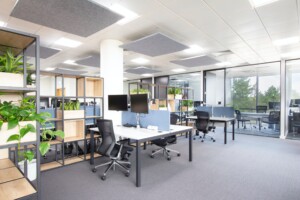
The best office designs incorporate and intertwine the rules of color and lighting with the company’s intended essence. The goal of designing or refreshing a workspace is to create an office that’s visually appealing and conducive to employee productivity and health.
For example, try using soft lights in combination with calming colors like green or blue in rooms where employees can go to relax or take a break. Combine red with brighter lighting to encourage productivity and innovation. You can also balance feelings of energy and calm by using multiple colors or various forms of lighting in a room.
Office Design is Our Specialty
Office design is more than just choosing furniture for an office, it’s understanding the important role that color and lighting play in productivity and well-being in the workplace. Consider Hilldrup’s customized office design layout services to revamp or refresh your next office space. Contact an expert today!
